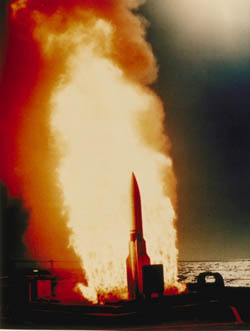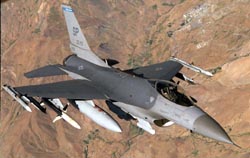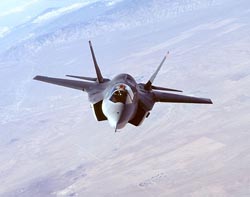Daily News
by Gail Helmer
[ Send Us News | Archives ]
Prisoner Of War Ships
Codemasters announced that its third-person action/adventure game, Prisoner of War has shipped. Set in 1941, Prisoner of War (POW) pays homage to Allied escape attempts from POW camps during World War II. Gameplay takes place across three historically realistic prisoner of war camps, including the infamous Colditz Castle. Captain Lewis Stone, an American Flight Officer, must use his wits and resourcefulness to escape and eventually fulfil his surveillance mission for Churchill s Special Operations Executive in London. Navigating the detail-packed camp environments, which include reactive lighting, weather and other graphical effects, Stone must communicate with other prisoners and use stealth to avoid guards, spotlights and dogs in an effort to gather as much information and equipment as possible while plotting the best escape route. Stone must then race for freedom in dramatic escape sequences that can range from impersonating a guard to engineering mass escapes before calling in Allied air strikes using the Germans own radio. For more information on Prisoner of War, check out our previous coverage of the game.
New Screens: World Airliners
Just Flight has released new screens and information on its latest expansion pack for Microsoft's Flight Simulator series. World Airliners is actually a boxed set containing updated versions of two previous add-on packs, Phoenix Simulations' 777-200 Professional, and 747-400 Professional.
Unlike the original release versions, those contained in the World Airliners pack boast full compatibility with Flight Simulator 2002. Previous owners of the boxed editions of 777-200 or 747-400 Professional can download free updates for FS2002 compatibility from Just Flight. Those who purchased download editions should get their updates direct from Phoenix Simulations.
IL-2 Add-On Operation Barbarossa
Just Flight has announced that they are publishing another mission and campaign expansion for IL2 Sturmovik, Operation Barbarossa. The add-on features hundreds of new missions, plus 60 new custom aircraft skins. Developed by Stefan Trombke, Operation Barbarossa will be released October 9th.
Military News
United Defense Receives Mk 41 VLS Contract
United Defense received this week a $44 million contract for the production of Mk 41 Vertical Launching System (VLS) subassemblies, services and spares.

United Defense produces the items in partnership with Lockheed Martin Naval Electronics and Surveillance Systems (NE&SS) - Marine Systems, the Mk 41 VLS launcher prime contractor, who provides electronics and performs final assembly and test of the Mk 41 VLS launchers for delivery to the U.S. and allied navies. NE&SS - Marine Systems is located in Baltimore, Maryland. The $44 million award covers the FY 02 build of four shipsets of Mk 41 VLS launcher hardware for the U.S. Navy and Foreign Military Sales customers. If options under the VLS contract for FY 03 and FY 04 VLS launchers are exercised, the estimated total value of this contract would exceed $113 million.
The Mk 41 VLS, a below-deck missile launching system, was originally designed for the Navy's Aegis guided missile cruisers to provide air threat protection for naval battle groups. Today, the VLS has revolutionized the way world navies think about naval warfare by evolving into a multi-missile, multi-mission launcher. No other naval missile launcher available today is capable of launching missiles for every threat in naval warfare, including anti-air, anti-submarine, ship self-defense, land attack, and ballistic missile defense.
Cracked Turbine Blade Responsible For F-16 Crash
Air Force investigators have determined a fatigue crack in a high-pressure turbine blade led to the catastrophic engine failure that resulted in the crash of an F-16 Fighting Falcon.
The aircraft from Misawa Air Base, Japan, crashed into the Sea of Japan on April 15. Maj. Chad Miller, the pilot, ejected from the aircraft with minor injuries.

The incident occurred at 11:29 a.m. about 1.6 miles northeast of the town of Tanosawa, Japan. Approximately 15 minutes after beginning a qualification training upgrade mission, Miller reported an engine problem. He immediately turned toward land and attempted to restart the engine four times without success. He turned the aircraft parallel to the coast away from populated areas and then ejected. The aircraft was destroyed upon impact with the water.
Based on evidence obtained during the investigation, the accident investigation board president's opinion is that a fatigue crack had developed in a high-pressure turbine blade. The crack caused a portion of the blade to fall off that then caused catastrophic damage and failure of the remaining turbine blades. Once the turbines failed, the engine could no longer produce thrust, continue to operate or be restarted.
Because the catastrophic engine failure occurred 40 miles from the nearest airfield, recovery to a usable runway was not possible. (Courtesy of Pacific Air Forces News Service)
Lockheed Martin Engineers Receive JSF Design Award
The American Institute of Aeronautics and Astronautics has honored eight Lockheed Martin Aeronautics Co. engineers for their contributions to the design of the stealthy, next-generation F-35 Joint Strike Fighter.
The citation, presented to the team on Oct. 1 at an AIAA forum in Los Angeles, recognizes the engineers "for an innovative tri-service solution next-generation strike aircraft demonstrating commonality, carrier approach and STOVL (short takeoff/vertical landing) flight all in a fourth-generation low-observable (stealth) airframe."

During flight-testing in 2000 and 2001, three variants of the JSF X-35 demonstrator aircraft established numerous records and proved that the Lockheed Martin JSF design would meet the performance requirements of the U.S. Air Force, Navy and Marine Corps, and the U.K. Royal Navy and Royal Air Force. Flight-test highlights included history's first-ever short takeoff, level supersonic dash and vertical landing in a single flight. The feat was made possible in large part by a revolutionary propulsion system incorporating a counter-rotating lift fan driven by the engine via a drive shaft and clutch.
"This group helped the JSF do what no other aircraft has been able to accomplish truly successfully - meet the fighter performance needs of the Air Force, the Navy and the Marine Corps using a single design," said Tom Burbage, Lockheed Martin executive vice president and F-35 JSF program general manager. "It's impossible to overstate how hard this team worked to achieve this very difficult goal. The honor could not have gone to a more deserving group."
Butcher, Murff, Park, Quayle and Renshaw were central to the basic overall integrated design of the JSF, while Law and Rezabek spearheaded the construction and flight testing of the JSF X-35 demonstrator aircraft. Bevilaqua played a leading role in creating the JSF concept by inventing the shaft-driven lift fan and showing how it could be used to design a family of STOVL and conventional variants of the same aircraft. The fan works automatically with a vectoring rear engine nozzle to produce unprecedented lifting force during short takeoffs, vertical landings and hovers.
[ Send Us News | Archives ]
by Gail Helmer
Thursday October 02, 2002
- Prisoner Of War Ships
- New Screens: World Airliners
- IL-2 Add-On Operation Barbarossa
- United Defense Receives Mk 41 VLS Contract
- Cracked Turbine Blade Responsible For F-16 Crash
- Lockheed Martin Engineers Receive JSF Design Award
Prisoner Of War Ships
Codemasters announced that its third-person action/adventure game, Prisoner of War has shipped. Set in 1941, Prisoner of War (POW) pays homage to Allied escape attempts from POW camps during World War II. Gameplay takes place across three historically realistic prisoner of war camps, including the infamous Colditz Castle. Captain Lewis Stone, an American Flight Officer, must use his wits and resourcefulness to escape and eventually fulfil his surveillance mission for Churchill s Special Operations Executive in London. Navigating the detail-packed camp environments, which include reactive lighting, weather and other graphical effects, Stone must communicate with other prisoners and use stealth to avoid guards, spotlights and dogs in an effort to gather as much information and equipment as possible while plotting the best escape route. Stone must then race for freedom in dramatic escape sequences that can range from impersonating a guard to engineering mass escapes before calling in Allied air strikes using the Germans own radio. For more information on Prisoner of War, check out our previous coverage of the game.
New Screens: World Airliners
Just Flight has released new screens and information on its latest expansion pack for Microsoft's Flight Simulator series. World Airliners is actually a boxed set containing updated versions of two previous add-on packs, Phoenix Simulations' 777-200 Professional, and 747-400 Professional.
Unlike the original release versions, those contained in the World Airliners pack boast full compatibility with Flight Simulator 2002. Previous owners of the boxed editions of 777-200 or 747-400 Professional can download free updates for FS2002 compatibility from Just Flight. Those who purchased download editions should get their updates direct from Phoenix Simulations.
IL-2 Add-On Operation Barbarossa
Just Flight has announced that they are publishing another mission and campaign expansion for IL2 Sturmovik, Operation Barbarossa. The add-on features hundreds of new missions, plus 60 new custom aircraft skins. Developed by Stefan Trombke, Operation Barbarossa will be released October 9th.
Military News
United Defense Receives Mk 41 VLS Contract
United Defense received this week a $44 million contract for the production of Mk 41 Vertical Launching System (VLS) subassemblies, services and spares.

United Defense produces the items in partnership with Lockheed Martin Naval Electronics and Surveillance Systems (NE&SS) - Marine Systems, the Mk 41 VLS launcher prime contractor, who provides electronics and performs final assembly and test of the Mk 41 VLS launchers for delivery to the U.S. and allied navies. NE&SS - Marine Systems is located in Baltimore, Maryland. The $44 million award covers the FY 02 build of four shipsets of Mk 41 VLS launcher hardware for the U.S. Navy and Foreign Military Sales customers. If options under the VLS contract for FY 03 and FY 04 VLS launchers are exercised, the estimated total value of this contract would exceed $113 million.
The Mk 41 VLS, a below-deck missile launching system, was originally designed for the Navy's Aegis guided missile cruisers to provide air threat protection for naval battle groups. Today, the VLS has revolutionized the way world navies think about naval warfare by evolving into a multi-missile, multi-mission launcher. No other naval missile launcher available today is capable of launching missiles for every threat in naval warfare, including anti-air, anti-submarine, ship self-defense, land attack, and ballistic missile defense.
Cracked Turbine Blade Responsible For F-16 Crash
Air Force investigators have determined a fatigue crack in a high-pressure turbine blade led to the catastrophic engine failure that resulted in the crash of an F-16 Fighting Falcon.
The aircraft from Misawa Air Base, Japan, crashed into the Sea of Japan on April 15. Maj. Chad Miller, the pilot, ejected from the aircraft with minor injuries.

The incident occurred at 11:29 a.m. about 1.6 miles northeast of the town of Tanosawa, Japan. Approximately 15 minutes after beginning a qualification training upgrade mission, Miller reported an engine problem. He immediately turned toward land and attempted to restart the engine four times without success. He turned the aircraft parallel to the coast away from populated areas and then ejected. The aircraft was destroyed upon impact with the water.
Based on evidence obtained during the investigation, the accident investigation board president's opinion is that a fatigue crack had developed in a high-pressure turbine blade. The crack caused a portion of the blade to fall off that then caused catastrophic damage and failure of the remaining turbine blades. Once the turbines failed, the engine could no longer produce thrust, continue to operate or be restarted.
Because the catastrophic engine failure occurred 40 miles from the nearest airfield, recovery to a usable runway was not possible. (Courtesy of Pacific Air Forces News Service)
Lockheed Martin Engineers Receive JSF Design Award
The American Institute of Aeronautics and Astronautics has honored eight Lockheed Martin Aeronautics Co. engineers for their contributions to the design of the stealthy, next-generation F-35 Joint Strike Fighter.
The citation, presented to the team on Oct. 1 at an AIAA forum in Los Angeles, recognizes the engineers "for an innovative tri-service solution next-generation strike aircraft demonstrating commonality, carrier approach and STOVL (short takeoff/vertical landing) flight all in a fourth-generation low-observable (stealth) airframe."

During flight-testing in 2000 and 2001, three variants of the JSF X-35 demonstrator aircraft established numerous records and proved that the Lockheed Martin JSF design would meet the performance requirements of the U.S. Air Force, Navy and Marine Corps, and the U.K. Royal Navy and Royal Air Force. Flight-test highlights included history's first-ever short takeoff, level supersonic dash and vertical landing in a single flight. The feat was made possible in large part by a revolutionary propulsion system incorporating a counter-rotating lift fan driven by the engine via a drive shaft and clutch.
"This group helped the JSF do what no other aircraft has been able to accomplish truly successfully - meet the fighter performance needs of the Air Force, the Navy and the Marine Corps using a single design," said Tom Burbage, Lockheed Martin executive vice president and F-35 JSF program general manager. "It's impossible to overstate how hard this team worked to achieve this very difficult goal. The honor could not have gone to a more deserving group."
Butcher, Murff, Park, Quayle and Renshaw were central to the basic overall integrated design of the JSF, while Law and Rezabek spearheaded the construction and flight testing of the JSF X-35 demonstrator aircraft. Bevilaqua played a leading role in creating the JSF concept by inventing the shaft-driven lift fan and showing how it could be used to design a family of STOVL and conventional variants of the same aircraft. The fan works automatically with a vectoring rear engine nozzle to produce unprecedented lifting force during short takeoffs, vertical landings and hovers.
